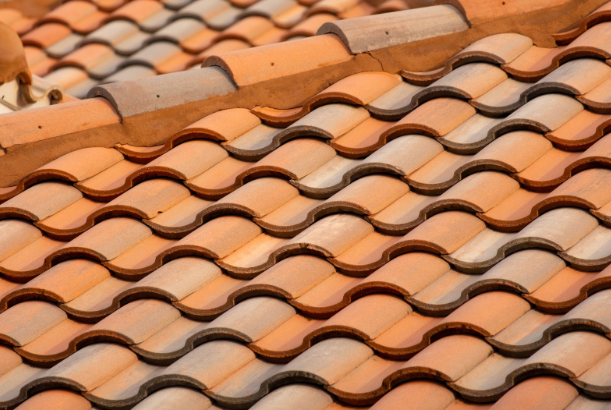Homeowners' Guide to Fire-resistant Roofing

Learn more about what it takes to make your roof as fire resistant as possible.
Of all of the disasters that can strike a home, arguably none is as quick hitting and destructive as a fire. A leak can be annoying and insidious, while hail damage can be unsightly and inconvenient. But a house ravaged by fire? There are not many ways to work around that.
As a result, it is paramount that homeowners make every effort to make their houses as fire resistant as possible. This starts with fire-resistant roofing. Keep reading for a complete breakdown of roof fires and the measures you can take to make your roof as fire resistant as possible.
What causes roof fires?
As the largest exposed area of a home, the roof is the most likely place at which a home fire will start or spread. Some of the most common causes of a roof fire include:
- Faulty wiring - Bad electrical wiring in the attic and faulty electrical connections in lighting fixtures and appliances can create sparks that ignite a roof fire.
- Chimney blockages - Properly functioning chimneys will effectively use flues to divert heat and smoke up through the home and out of the house via the chimney. Broken tiles or improperly designed chimneys can allow heat, flames and sparks to escape into the attic and start a roof fire.
- Dried vegetation - Low hanging trees with dead branches, dried leaves and other types of fire-susceptible vegetation accumulating on the roof are at extreme risk of catching an errant spark or ember from any exterior fire and starting a fire on your roof.
- Untreated wood roofing - Similar to dried vegetation, untreated wood roofing is a constant threat to ignite. Despite its rustic appearance, many fire-prone areas prohibit the use of wood roofs unless they are regularly treated with powerful fire retardants and pass annual inspections.
And these are just some of the most common sources of roof fires. Factors such as arson, lightning strikes and inferior insulation are some other possibilities to keep in mind when choosing the most fireproof roofing materials.
Why is fire-resistant roofing important?

Obviously, fire-resistant roofing is important to protect the people, pets, property and possessions within a building. It can prevent the hassle of filing insurance claims and being displaced from your home while the roof is being replaced.
In addition, it is also important to note that there are some building construction types that will only accept Class A roofing materials. For example, hospitals, schools or any other Type 1 building that is required to be completely noncombustible will not allow any roofing materials below Class A. Class A roofing products are the most fire-resistant materials on the market and will last between two and four hours before igniting, making them the only choice if you want to construct a Type 1 fire resistant home.
What are the most fire-resistant roofing materials?
Even though Class A roofing materials are the most fire resistant and can resist flames for up to four hours prior to igniting, many roofing products fall short of this standard and land in Class B (ignites in around an hour) or Class C (ignites in 20 minutes or less). Some products, such as aluminum or rubber, can only achieve Class A standard with additional treatments. For the sake of this article, we want to explore only the most fire-resistant products that achieve a Class A rating without any follow-up intervention:
Slate, clay, concrete or ceramic tiles

Any of these masonry products will provide a building with the utmost in fire protection. They also provide a stately aspect that increases the curb appeal of a home. The downside with these materials is that they can be expensive and quite heavy and usually require special equipment or a specialist in masonry work to install.
Metal
Metal is another Class A roofing option. It is tough, durable and recyclable, making it one of the most sustainable roofing products on the planet. The only downside to metal roofing is that it has not always provided preferred aesthetics for residential structures, although this is being challenged as modern homeowners change their personal preferences to achieve sustainable living.
Composite tiles
Composite tiles are the most innovative of all of the Class A roofing options. Fabricated from a combination of asphalt, fiberglass and other polymers, composite tiles offer homeowners the broadest range of aesthetics while providing top-notch fire protections. With finishes that closely resemble wood, slate and other types of traditional roofing products, there is a composite roofing tile to meet the aesthetic tastes of all types of homeowners.
Protect your roof with fire-resistant roofing materials
As the largest exposed area of your home’s exterior, there are myriad factors that could ignite a roof fire. Therefore, it is critical that you build with the most fire-resistant roofing materials on the market. By choosing Class A products such as slate, metal or composite roofing tiles, you are giving your home the best fire protection possible with no ongoing maintenance requirements.
Have a question? AskARoofer.
Find your local roofing contractor in the RoofersCoffeeShop® Contractor Directory.









Comments
Leave a Reply
Have an account? Login to leave a comment!
Sign In